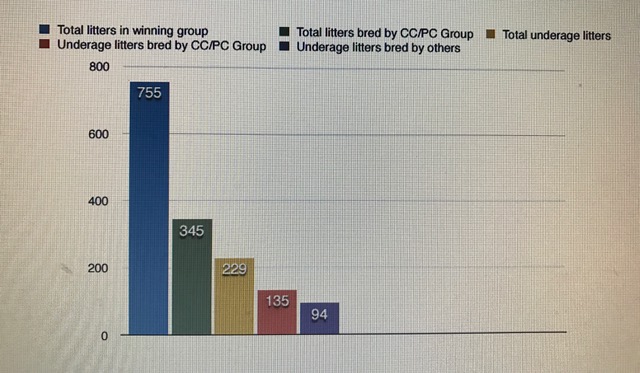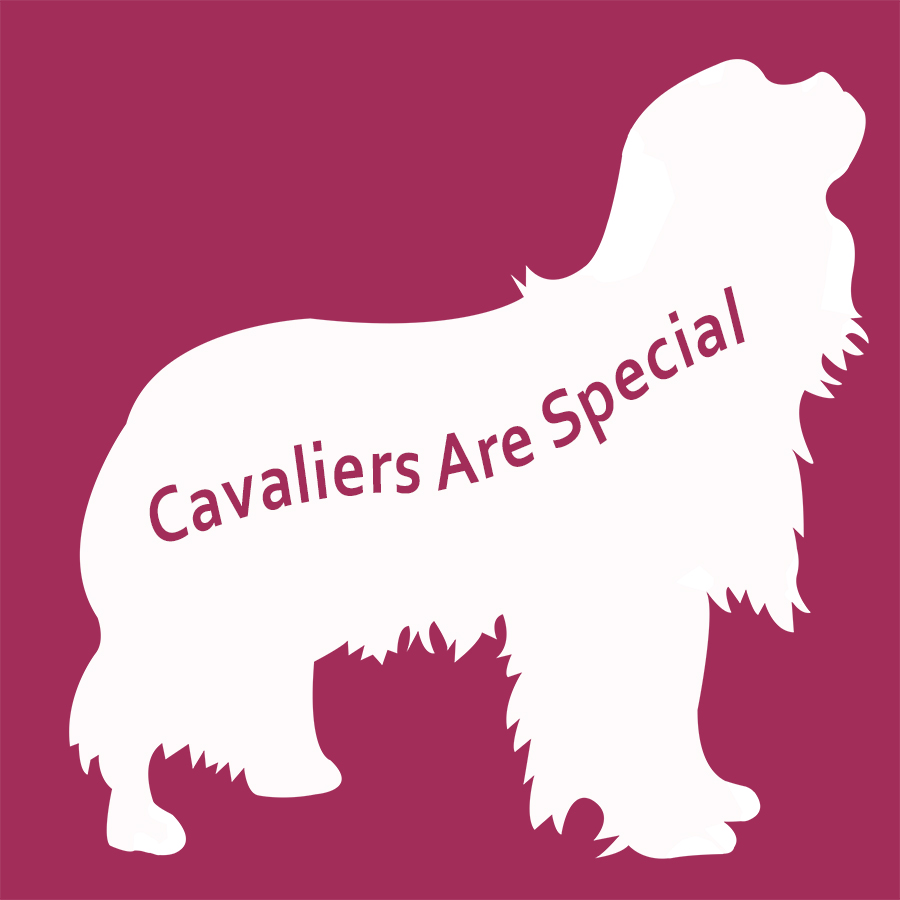Crufts, the dog world’s annual extravaganza, took place in March. On the Friday of the show health campaigners Margaret Carter and Charlotte Mackaness, along with television vet and author Emma Milne, presented the comments from the then 30,000 signature-strong Cavalier health petition to the Kennel Club asking for compulsory testing for Mitral Valve Disease (MVD) and Syringomyelia (SM). The KC repeated its refusal to make testing mandatory.

Under the bright lights a few hours later the Cavalier best of breed was crowned. For the dog’s owners it was a time of great celebration. For health campaigners, it was a sober reminder of just how badly enforcement of breeding guidelines is needed.
The winning dog turned 2.5 years old just before Crufts. To help reduce the incidence and age of onset of heart disease, cardiologists state Cavaliers should not be bred before this age. The MVD breeding protocol, which members of the Cavalier Club in the UK sign up to when they join, also states that the dogs’ own parents should be at least five and heart clear.
Castlewytch Rave On With Russmic is owned by a committee member of the national Cavalier Club. However, he’d already sired seven litters; one when he was just 13 months old. One of the earliest was with a bitch owned by the then chairwoman of the Cavalier Club and Kennel Club Cavalier Breed Health Liaison, a role she still holds.
As a result the Daily Telegraph ran a piece about the plight of Cavaliers. The response from many breeders was predictable and depressing with those stating the facts being accused of “witch hunting”.
Virtually all breeders say they health test and follow guidelines. But something must be going badly wrong with Cavaliers, as why else would the Kennel Club’s breed health survey show their life expectancy is continuing to fall and that heart disease remains the biggest killer? Research published earlier this year revealed that the Cavalier Club’s voluntary heart scheme has achieved negligible progress in 20 years.
This made us wonder: was this year’s Crufts best of breed winner just a very high-profile exception to the rule and are top show breeders and breed club officials setting a good example for others to follow. Cavaliers Are Special decided to do some research into underage matings – those with one or both parents under the age of 2.5.
The Cavalier Club awards trophies based on points won during the year. We analysed the age at which the top Cavaliers in three categories were bred from 2012 to 2016 inclusive (114 Cavaliers). The three trophies were for the Cavalier scoring the most individual points, best stud dog and best brood bitch. The latter two categories are based on points scored by their progeny.
Of the 755 litters bred by these Cavaliers in the five years we examined, 30% had one or both parents under 2.5 years old.
We also looked at which of these Cavaliers were owned by past and present Cavalier Club committee members and office holders, and past and present regional and national puppy coordinators – referred to as the Club Committee/Puppy Coordinator group. Of the 345 litters bred by this group, 39% had one or both parents under 2.5 years old. In contrast, non compliance with breeding guidelines with breeders outside of this group was just 23%.

Even looking at each of the five years individually, the Club Committee/Puppy Coordinator group consistently bred significantly more litters outside of breeding guidelines.
You can see the detailed analysis and digest the figures by reading the report. It is also worth bearing in mind that only the ages of the parents were examined. The analysis did not consider the age of the grandparents (which guidelines say should be at least five years old). Nor was it possible to ascertain whether any of the Cavaliers did have up-to-date and clear heart certificates when mated. Given this, it may be that the rate of non compliance with the breeding guidelines is even higher.
Regardless, this analysis reveals a very worrying level of disregard for the internationally recognised MVD breeding protocols among respected and successful show breeders. However, what is of most concern is that this is even higher among those who “run” the breed and those who the puppy-buying public goes to for advice on finding a Cavalier puppy. The Cavalier Club’s own website states: “Those intending to purchase a puppy are recommended to buy from a breeder who health tests their stock, who follows breeding guidelines issued by veterinary experts, and who is prepared to discuss and advise the purchaser on health issues.”
We believe these figures reveal a huge gulf between what “top” breeders say about their commitment to Cavalier health and what they do in practice. As long as guidelines and testing remain optional, even the most successful and influential Club breeders will routinely ignore guidelines. It is hard to see a healthier future for Cavaliers without mandatory testing. The 31,000 people who have signed the Cavalier health petition agree.


Congratulations on an excellent piece of research. Facts, not emotions, are what are needed, though after years of longing for Cavaliers to be rid of MVD (I don’t breed, so couldn’t take practical steps, just pick up the pieces from other people’s poor practice), heads and brick walls still come to mind!
LikeLiked by 1 person
Thank you very much Kate
LikeLike
Although we purchased our Cav from what was probably a somewhat questionable shop in Flushing, Queens, NY, and our pup (approx 4 mos old) came with papers (Cstating he was born in Hungary, he came with papers ACA eligible. Since we only wanted a pet I’m not sure we ever sent them in, but that is not why I am writing. Our Ralphie was born November 19, 2004. He is still alive and doing well. We have always had our Vets carefully monitor his heart. He didn’t develop a murmur until a little less than 3 years ago. He is a bit taller and he is sleeker than American Cavs. but having had our Hungarian dog we would never choose a dog bred in the U.S. no matter what breeding history they claimed. I ran into a lady about a year ago who had a beautiful Ruby she had gone to England to get.
We are elderly enough we probably would not have a puppy again and certainly would not take a chance on a Cavilier puppy again. We were lucky in our ignorance with Ralphie ( a beautiful 23 pound Tri color) and it will be heart rending enough when we lose Ralphie in the next 2-3 years, he is twelve and a half now.
Lee & Randy Wilson
308 S. Manning Ave
Muncie, IN, 47303
LikeLike
Sadly, the findings of this report don’t surprise me, appalling as they are. I believe that many breeders tend to think too much in the short term, and of their own interests, rather than the ultimate welfare of the breed. This is partly due to some breeders having little scientific knowledge and therefore no rigorous thinking when it comes to making decisions about genetics.
I used to own Irish Setters and remember reading about the time in the 1930s when PRA (Progressive Retinal Atrophy) was affecting many dogs. Mr James, the leading breeder at the time, got all the breeders together in a scheme to test the dogs, and any dog affected was put down. A drastic measure, but it saved the breed. I wish we could have strong leadership like that now for Cavaliers.
LikeLike
We couldn’t agree more Alex. Nothing is gained by trying to underplay health issues or brush them under the carpet. Facing the truth might be tough but it is what every individual must do for the greater good of the breed.
LikeLike